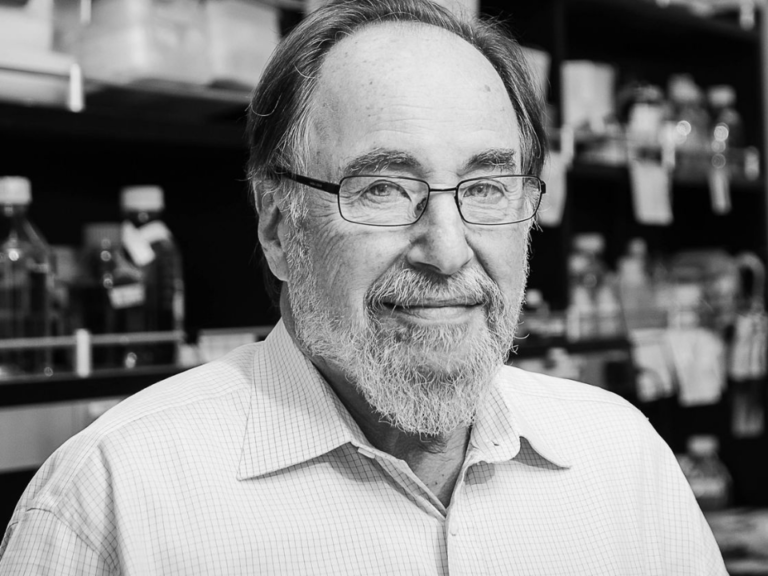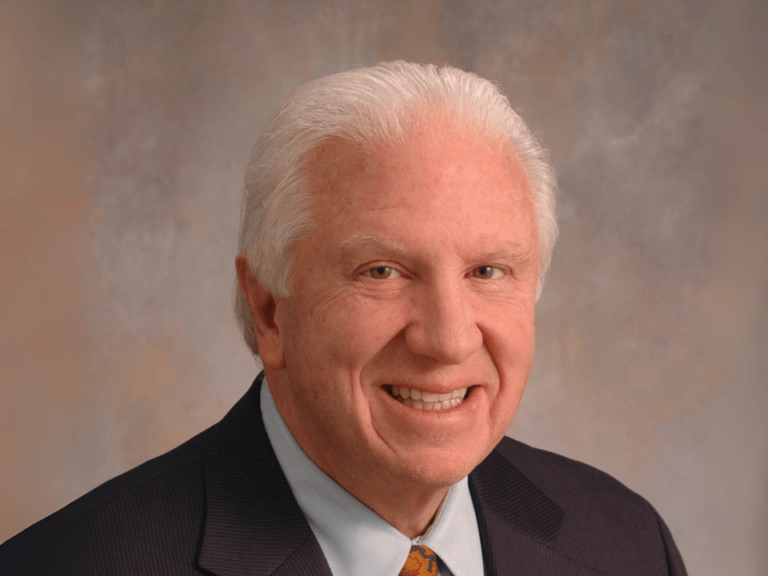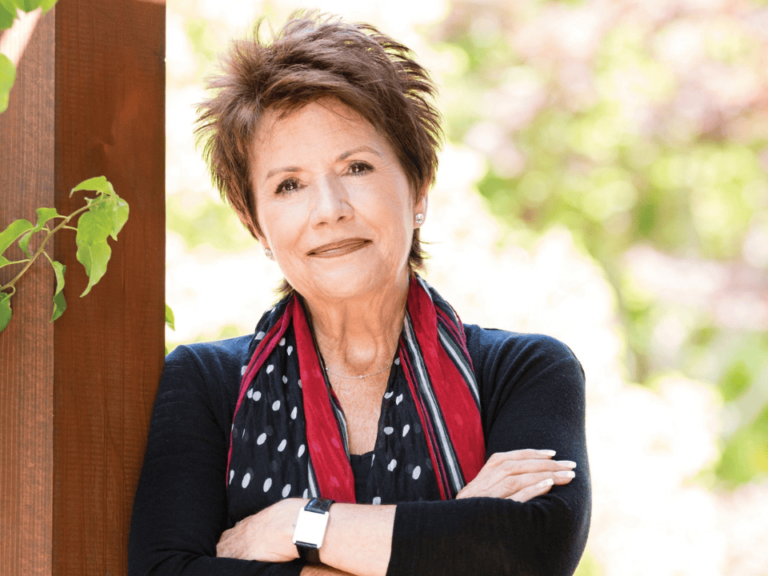NCI awarded about 635 R01s in 2015, up from 629 in 2014, said NCI Acting Director Doug Lowy at a recent joint meeting of the National Cancer Advisory Board and the NCI Board of Scientific Advisors.
The number of R01 awards fell short of pre-sequestration levels, but there has been a substantial increase in R21 applications—from 225 in 2012 to about 355 in 2015.
“What I would like you to see is that when sequestration happened there was a major reduction in the budget for the NCI; a reduction of $275 million compared to FY 12,” Lowy said at the meeting Dec. 1.
“There was a much more modest reduction in the competing RPGs from FY 12 to FY 13. Then in FY 14 and FY 15, we had added about $50 million in each of these two years; these are additive for the RPG pool.
“This is with there having been about a $140 million increase in FY 14 and just a $21 million increase in the NCI budget. So just to put into context what has happened with the RPG pool, in the context of the overall budget situation.
“We are still on a continuing resolution which makes it harder for us to function at full capacity.”
The text of Lowy’s remarks to the NCAB and BSA follows:
I would like to express my welcome for everyone and also especially for the new members of the NCAB and BSA. I want to bring you up to date on a number of areas since we met back in June.
I want to talk about the RPG success rates from FY 15; the new Research Specialist Award; the new cryo-EM user facility at the Frederick National Laboratory for Cancer Research; the cancer health disparities workshop held a couple of weeks ago; the new pilot project with the Department of Energy; and then the MATCH trial update, which Jim will discuss.
Last week, we put up the data from FY 15 for the RPG success rates, etc., and the detailed report is available here at the NCI website, either through this URL or you can go directly to the main part of the website and access it through there.
I have repeated one of the tables, because it gives you some information about has happened the last four years with success rates for the different kinds of applications. The FY 12 is on the right and FY 15 is on the left. I highlighted in red what has happened with the R01s, and if you look at the total number of R01s, we had about 660 that were given in 2012 and about 635 in 2015. The number from 2015 is larger than it was in 2013 or 2014—2013 is when sequestration occurred and we had a 5 percent decrease in NCI budget and the NIH budget overall.
Here I have highlighted the R21 applications and the success rate for the R21 applications has been somewhat less than that for the R01 application, which has remained at 14 or 15 percent. The success rate has gone actually up from 10 percent in FY 12 to 12 percent in the last couple of years. We have also maintained the increase—there was a substantial increase that I discussed a year ago in 2012, we only funded about 225 R21 applications. This number went up by 125, to 355 in 2014, with a similar number in 2015.
As we have discussed before, the Outstanding Investigator Award were first made in FY 15, so this is on top of the R01 and R21 awards that were made this year.
On this slide, I have depicted for you the competing RPGs, this is the dollar amount on the top line. This on the second line is the change from the previous year in millions of dollars. Then on the third line is the total NCI budget for those years and then the change from the previous year. Here FY 12 is on the left and FY 15 is on the right.
What I would like you to see is that when sequestration happened there was a major reduction in the budget for the NCI; a reduction of $275 million compared to FY 12. There was a much more modest reduction in the competing RPGs from FY 12 to FY 13. Then in FY 14 and FY 15, we had added about $50 million in each of these two years; these are additive for the RPG pool. This is with there having been about a $140 million increase in FY 14 and just a $21 million increase in the NCI budget. So just to put into context what has happened with the RPG pool, in the context of the overall budget situation.
As I mentioned, the addition of the Outstanding Investigator Award will continue to put pressure on R01 and R21 awards, but we hope we can maintain those numbers, and certainly if we get the president’s budget and you will hear from MK Holohan [Quattrocchi, acting director of the NCI Office of Government and Congressional Relations] after our presentation with the legislative update, you will hear about the status of the FY 16 budget. We are still on a continuing resolution which makes it harder for us to function at full capacity.
So in the last few weeks we had approval for the R50 Research Specialist Award that Dinah Singer [director of the NCI Division of Cancer Biology] has discussed previously. The applications are due Feb. 9. The purpose or intent is to support a new career path with stable salary support for accomplished scientists who want to continue to do research but who do not want to be a PI. This is a five-year award and it is potentially renewable. It would support that portion of salary dedicated to NCI-funded cancer research by the PI. It wouldn’t cover research expenses, but could include travel funds of up to $5,000 per year.
The application requires a letter from the sponsoring principal investigator—but grantees, that is, the research specialist, would have independence to move to another lab or institution, but with prior approval from NCI.
This is to try to give some prominent stability to a very important part of our research enterprise, the research specialist. Just as we tried to give prominence to the outstanding investigators with the Outstanding Investigator Award.
New Cryo-EM at Frederick
Now I would like to turn our attention to establishing a cryo-electron microscopy user facility at the Frederick National Laboratory for Cancer Research.
The goal here is to provide extramural research community access to high-quality cryo-EM so that by developing high-quality images, it will be possible to determine structures of macro molecules of importance in cancer research. On September 30th, the Frederick National Laboratory advisory committee, which is headed by [BSA member] Joe Gray [director of the Center for Spatial Systems Biomedicine at Oregon Health and Science University], who is here today, discussed a presentation by Dr. [Sriram] Subramaniam [head of the Biophysics Section of the NCI Laboratory of Cell Biology].
This was his third presentation, instead of striking out, the third time was the charm, and the advisory committee recommended, essentially unanimously, to go forward with this program. And so we have instituted it.
There will be a steering committee for user facility and it will be composed of members of the advisory committee, the cryo-EM community, and the structural biology community. And Sriram will be the facility director at least for now.
We are proposing there be a modest user fee, far less than the cost of recovery, but this was discussed by the advisory committee and seems to make sense so there was some commitment on the part of the laboratory that was using it.
The Titan Krios [electron microscope] that was going to be the workhorse for this user facility arrived at the end of September, and we are leveraging the investment by the Center for Cancer Research, intramural program, in cryo-EM technology which made it more cost effective for us to set up the user facility.
The purpose is the potential for determining high resolution without three dimensional crystals, structural analysis of dynamic protein assemblies, and progressively higher resolution, as you’ll see on the next slide.
You can map conformational states of integral membrane proteins, localization of drug binding sites, and a relatively high degree of automation in data collection and processing. This next slide shows you how the resolution has increased substantially over the last dozen years or so, from about 9-angstrom resolution in the early 2000s, to 2.2-angstrom resolution this year.
This has led to a lot of high profile papers that use cryo-electron microscopy, with this nice pun in Nature saying the revolution will not be crystalized.
Cancer Health Disparities
I would like to talk now about the NCI workshop on cancer health disparities. This is just one part of our effort to develop research priorities for NCI in cancer health disparities.
The workshop was held three weeks ago. Lisa Richardson [director of the CDC Division of Cancer Prevention and Control], Edith Mitchell [director of the Center to Eliminate Cancer Disparities at Thomas Jefferson University], Sandy Markowitz [head of the Cancer Genetics Program at the Case Western Comprehensive Cancer Center], and L. Michelle Bennett [director of the NCI Center for Research Strategy] were co-chairs.
It focused on a few cancers—all which have health disparities, not just in terms of incidence, but importantly in terms of mortality rate: breast, prostate, colorectal, liver, multiple myeloma. There are several different under-represented minorities that have increased risk of developing liver cancer as well as dying from it. And liver cancer is the cancer in the United States whose incidence and mortality are increasing faster than that of any other.
So the overall questions we were asking was what accounts for the elevated risk in these high risk populations—biology, lifestyle, access, and utilization—and what can be done to mitigate the risk in the short-term, intermediate-term, and long-term.
There were two overarching research areas that were discussed. This is just one of many proposals that were made during the meeting. I want people to understand that we haven’t really decided what is going to happen. We’re going to have an internal meeting next week and we’ll solicit more information from others before deciding what our research priorities are actually going to be.
One possibility was to develop and study a cohort focused on minority individuals who develop cancer at an unusually early age, it could address roles of genomics, environment, biology, screening, treatment, and other causal factors or associated factors. Another area was financial toxicity: understanding it, and understanding how to try to overcome it.
My own feeling is that the area of financial toxicity is a very important one, but although there is a certain amount of research still to be done in it, a lot of it is really deals with the area of implementation, and I hope there will be other entities that will try to champion overcoming this area.
I now would like to turn to one example, which is colorectal cancer—one of the areas that was discussed—and just to reiterate for you there is this increased incidence and mortality that’s gone on for many years among African Americans.
Some of the research questions that were proposed were what are the best algorithms to follow for screening and for follow-up? What would be effective, acceptable, feasible and scalable?
Barry Kramer [director of the NCI Division of Cancer Prevention] has often said the best colorectal cancer screening test is one you are willing to take.
But we want to see if we can try to put really some specificity to this, and one of the areas that we’re thinking of trying to work with other groups outside of the NIH is with PCORI, the Patient-Centered Outcome Research Institute, to work with them with joint funding to look at issues such as screening for this or possibly screening with breast cancer or other areas.
We met with Joe Selby last month, who is the head of PCORI, and we’re planning to meet again with him and several members of his group next month to try to go forward and be more precise what we might try to work on together.
And then effectiveness of prevention, chemoprevention and lifestyle factors. I mentioned at the virtual meeting of the NCAB back in September, the U.S. Preventative Services Task Force made a draft recommendation for the first time for use of aspirin to reduce the incidence and mortality from colorectal cancer. The final recommendations for colorectal cancer reduction are expected in 2016, and we suspect they’re likely for all populations eligible for aspirin for reducing risk of cardiovascular disease within a certain age range. Therefore, the recommendation for reducing colorectal cancer risk will be tied to the recommendation for reducing the risk of cardiovascular disease.
During the meeting for health disparities, I looked up the uptake has been among African Americans for the use of aspirin for reducing cardiovascular disease, and this is a recommendation that was made more than ten years ago. Aspirin uptake for reducing risk actually is substantially lower in several different reports for African Americans. Therefore, two weeks ago I spoke with Gary Gibbons, director of NHLBI, and we are going to explore the possibility of a joint project to promote the use of aspirin to prevent cardiovascular and colorectal cancer. Obviously this would be for minority populations as well as for other populations.
Michelle Bennett, Worta McCaskill-Stevens [chief of the NCI Community Oncology and Prevention Trials Research Group] and Sanya Springfield [director of the NCI Center to Reduce Cancer Health Disparities] did a Cancer Currents blog at the beginning of this month and they discussed efforts in biology clinical trials and training a more diverse work force. And we’re asking people in the community to join in conversation to share thoughts, ideas and recommendations.
Predictive Models in Precision Medicine
The last subject is the work that we’re planning to do with the Department of Energy to try to use their high exoscale computing, and Warren Kibbe [director of the NCI Center for Biomedical Informatics and Information Technology] here at the NCI has worked closely with Dimitri Kusnezov [chief scientist and senior advisor to the secretary] at the Department of Energy to forge this pilot program. Basically, the Department of Energy has really a lot of expertise with computing, data analysis and experiment-driven co-design of extreme scale simulation—and needless to say we have a lot of interest in precision oncology research and clinical applications.
So we’re trying to put these two together to have advance computing solutions for cancer. One of the pilot projects that we’re proposing to do is to use predictive models for pre-clinical screening with the goal of improving those predictions. This is part of the oncology portion of the Precision Medicine Initiative. The projected timeline for doing this is shown here.
The overall goal is to try to see: Can we come up with highly predictive models of what the biology of tumors will be and what the response will be to various kinds of treatment?
I’m now going to turn the microphone over to Jim Doroshow [director of the NCI Division of Cancer Treatment and Diagnosis] who will bring you up to date on what has been happening with the MATCH trial, which is also foundational for the oncology part of the Precision Medicine Initiative.
DOROSHOW: Thanks, Doug. I will try to be brief because we have a lot other things that we want to hear about.
But first let me remind you that the match study was initiated about the middle of August. Under leadership of the ECOG-ACRIN cooperative group, and also a group from the NCI, Barbara Conley, Alice Chen, and Jeff Abrams and others worked tirelessly to get that study off the ground.
So I’m delighted to report to you that in approximately eight or nine weeks, the trial accrued over 500 patients. At one point 70 patients per week—the fastest treatment trial accrual ever in the history of NCI-supported clinical trials, which is really quite remarkable since significant portion of the accrual came from the community. With physicians over the country, part of our NCORP group submitting samples to one of four different laboratories that did sequencing, and one base laboratory that evaluated the materials that were sent. This is really a national effort at both university medical center and community clinical practice milieu.
Because of that fast accrual, based on what was pre-specified in the study, that the study is now on a pause. It was specified in the protocol that once we got to 500 patients—which we thought would be toward the end of the first year, not after two months—there would be a pause to look at the accrual, the characteristics of the patient population.
Again, I think some of you know and maybe others don’t—the way the trial was written, about 25 percent screenings are reserved for rare cancers, so we need to look at who has been accrued, what the distribution of diseases might be, what the distribution of patient characteristics are.
And this is an opportune time because we expect that by the time the study is reopened for accrual, hopefully in January, we will have the time working with central IRB which has been working just incredibly hard to try to open an additional seven or ten additional drug treatment arms that will broaden range of drugs available to patients from 10 to between 10 to 17 or 20 or 21 which will also be useful for patients.
It’s a remarkable experience. We also learned the limits of our capacity. The other reason for thinking this pause is a good idea is that we’re in the process of trying to open and find two additional laboratories to provide help in the sequencing effort, because we expect that the accrual will be very rapid once we reopen.
So I think that this is a remarkable activity that have is involved, for those who don’t know, literally hundreds of individuals—scientists, clinical trialists, statisticians—to try to make this activity happen. So we’re very proud of the way the community has responded.
JACKS: Thanks, Doug, and thanks, Jim. So we have time for questions.
CHERYL WALKER [BSA member and director of the Institute of Biosciences and Technology at Texas A&M Health Science Center]: So I think it would be helpful to have, along with the success rates for RPGs, some sense of what’s happening to the funding levels. I think it would be nice to, for example, to see for grants that have requested modular budgets, what percent has actually has been awarded. And then for larger grants, how that has gone, and to be able to look at that over time. I think would be useful if we can have that information as well.
LOWY: Sure. I presented some that have information a year ago here at the joint board meeting. We can certainly update it. One of the things that we did as a result of that meeting and follow up was to essentially take the automatic 17 percent cut that we were making in the modular grants and make it only an 8.5 percent cut.
We would like to eliminate that 8.5 percent cut but I will tell you that I am reluctant to do that at this point, because if we were to do that it would add another $10 million essentially to the cost of the modular grants. I would rather at this point try to take that money and use it for more grants rather than for doing that. If we got substantial increase, especially in a sustained rate, for the NCI appropriation, that would be one of the first things to go, if you will.
KEVIN SHANNON [BSA member and American Cancer Society Research Professor at the University of California, San Francisco]: Jim and Doug, I wanted you to maybe fill in a few more details about the pre-clinical effort. It seems to me the three-year timeline to actually figure out if things are working and are predictive seems a little unrealistic.
What’s the sort of—obviously cell lines are cell lines—but for the PDXs, is it going to be a pilot where they treat the PDXs with the same drugs the patients got to see? How do you actually know if something is predictive? We used to fight about this in the mouse models consortium all the time, and I didn’t see anything in there that made me confident that in a two-to-three-year window that you can actually answer the predictive question with any sort of precision.
DOROSHOW: I have to agree with you, it’s a very aggressive timeline. What we are in fact doing a fairly large pre-clinical, clinical trial, mimicking the IMPACT trial that is a randomized trial of matching drugs to mutations in pre-clinical models. So we will have a considerable amount of therapeutic data across a large enough number of models, and a large enough number of animals, that we’ll have all have been sequenced and have substantial amount of information over the course of at least the first year and a half, to be able to provide them with DOE computer folks with very interesting data.
Is it going to be done in three years? It’s probably not going to be done in three years.
LOWY: Kevin, I want to make it clear, that what I was talking about with the Department of Energy is a pilot program, and not expecting to solve everything by FY 18.
SHANNON: Can you comment on just the clono-heterogeneity issue and how that might be dealt with in this effort? Neither PDXs, nor cell lines recapitulate that. As near as I can tell, a very large proportion of cancer drug resistance and relapse is due to inherent genetic instability and heterogeneity.
DOROSHOW: one of the very strong outputs of presentation made to the Frederick committee a couple of months ago about the models, was a really very insightful suggestion, which we’re going to follow-up on. To actually work with several of the sites that do fast autopsies. To actually obtain from an individual patient a series of different biopsies at autopsy, so that we start to have models that in an individual patient might reflect some of the heterogeneity that you’re talking about.
KEVIN WHITE [BSA member and director of the Institute for Genomics and Systems Biology at The University of Chicago]: The accrual in the MATCH trial is spectacular. And what it brought to mind was the challenge of getting the sequencing data, the anonymized clinical records data, the outcomes data from those patients out the general community, you may have to take steps to speed up that process. Could you talk about what steps you may take and what the timeline might be until the general scientist out there can plow through the data?
DOROSHOW: The last clause I don’t know the answer to, because it depends how fast we complete the trial.
The first part of your question I think is a critical one, we spent time trying to model how much in terms of additional resources need to go out to the sites that are doing the sequencing, to be able to bring them up to speed to deal with the volume.
So basically the numbers are pretty clear. If we actually continue to get 70 accruals per week we’d be done with trial in a year. So the resources have to be brought forward from year two, year three to be able to provide what’s necessary for the sites that are doing sequencing, and also the tissue preparation to give them the resources to handle that volume. I’m not sure that the volume will continue exactly at that level but we’ve made substantial contingency plans and will provide additional resources to those sites to be able to handle the load.
BARBARA CONLEY [associate director of the Cancer Diagnosis Program in the NCI Division of Cancer Treatment and Diagnosis]: I think this is a stellar discussion but it’s my understanding that with any trials we share the data after publication? So as each arm would finish that would be a publication and data shared; is that still correct?
DOROSHOW: This is an umbrella to do 20 to 22 or more individual phase II trials. So that trials will—they’re open now, but they will close quickly. It’s not going to be that long—we won’t wait until the end of the accrual phase for the study to get information out to public. Warren, do you want to say anything?
KIBBE: That’s right as we start to close different arms we’ll make data available. Our thought now is it will flow to the Genomic Data Commons, and will be available there. How quickly will we get it into the Genomic Data Commons? It won’t be there until June 2016, because the Genomic Data Commons doesn’t open until June of 2016. That would be the earliest the data is available there.
JACKS: That is important clarification in answer to your question, because it doesn’t sound like data availability is dependent on publication. Closing trials rather than completion, and access by the data commons.
Kevin is asking me if that’s codified. It sounds to me like it’s a plan under discussion. But your suggestion I think would be that it should be codified somewhere.
GRAY: Doug, I was wondering if you or Warren could say more about the DoE interactions. In particular, what is DoE’s role in this? Are they just providing compute cycles or are they actually scientifically engaged in algorithm development and things like that?
KIBBE: With respect to the DoE, I think this is a really great opportunity for us to have a partnership with them. Both an intellectual and a resource partnership. I don’t think it would be in NCI’s or the cancer community’s best interest if we just duplicated their resources or tried to duplicate their expertise.
What I do think this partnership gives us the ability to do is to bring resources and the expertise that they have and make it more relevant for our community. So that’s really the basis of this initiative, bringing the two groups and having us learn from each other and hopefully having us partner over the long time.
GRAY: But that didn’t quite answer the question. So curious what resources DoE is actually putting into this? Historically, they have not been terribly willing to invest in human research, or at least in a reduced level.
So I’m curious to whether or not DoE is contributing scientific resources to this, or are they making compute cycles available?
KIBBE: It will most definitely be partnership with scientists in the DoE as well as the NCI. How many? I think that’s still under discussion.
LOWY: There is considerable interest on the part of the Department of Energy. Warren and I met with Sec. [Ernest] Moniz a couple of months ago and we will meet again in two weeks, and both times were at his request.
JACKS: I had a question about the R50, and this might be for Dinah to address. It states the grant for the research specialists will be used to basically offset the salary that is paid on NCI-funded cancer research. I’m confused about what that means exactly. Is it expectation the individual is already supported on existing grants and therefore their salary is shifted to new award? And their salary on the old award will be what? Shifted over?
So it’s a net no gain, just a shifting of the dollars from one pot to another? So that basically answers my question…
MACK ROACH [NCAB member and director of the Particle Therapy Research Program & Outreach at the University of California, San Francisco]: One thing related to budget stuff, I want to appreciate and say that this is one of the best pamphlets that I have seen put out. So to summarize and state what the budget is looking like for the fiscal year 2017, I think it looks very positive.
We have had a lot of funding issues over the number of years. It’s nice to see something that talks about more money and giving people some ideas about where the money is being spent. So I wanted to say somebody did a good job of this brochure.
LOWY: A lot of people put in a lot of work, but especially Rick Manrow is the person who was responsible for a lot of the writing.
We are already thinking about the FY 18 bypass budget request. One feature in FY 17 is the notion of trying to get sustained increase in NCI budget. And one of the features that we are planning to put in to the FY 18 budget is some of the important projects that we could consider embarking on or really doing at a much bigger scope if there were more funding.
We’re going to be asking people for input about the kinds of projects, etc., so that we are hopeful that the FY 18 bypass budget maybe you will say a year from now, “That’s even better than 2017!”











